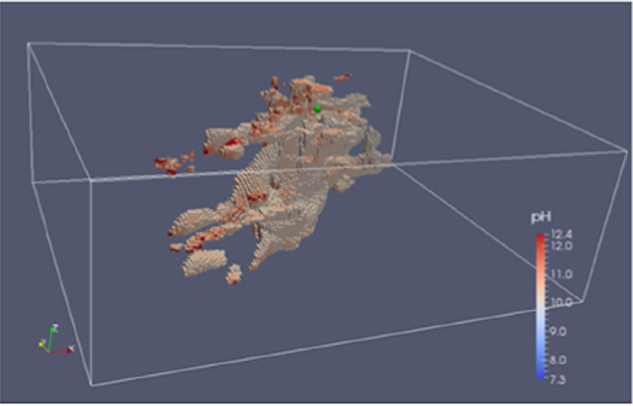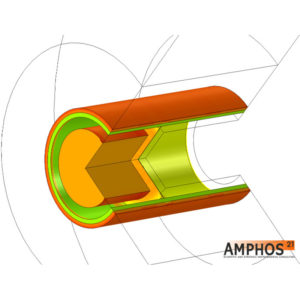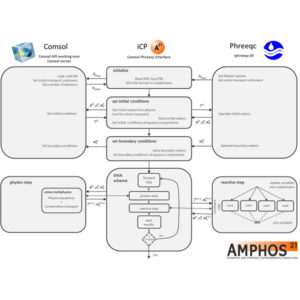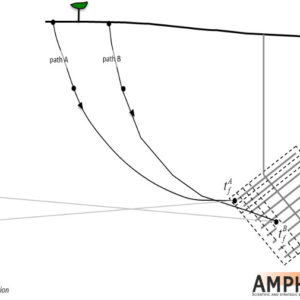MARFA
The computer code MARFA (Migration Analysis for Radionuclides in the FAr field) uses an extremely efficient particle-based Monte Carlo method to simulate the transport of radionuclides in fractured rock systems. The algorithm uses non-interacting particles to represent packets of radionuclide mass. These particles are moved through the system according to rules that mimic the underlying physical transport and retention processes. In contrast to the conventional random walk particle tracking algorithm, which use a specified time step and random spatial displacement, the MARFA algorithms use a fixed spatial displacement and a random transit time for the displacement. The use of a fixed spatial displacement makes the code extremely robust and computationally efficient.
Description
The computer code MARFA (Migration Analysis for Radionuclides in the FAr field) uses an extremely efficient particle-based Monte Carlo method to simulate the transport of radionuclides in fractured rock systems. The algorithm uses non-interacting particles to represent packets of radionuclide mass. These particles are moved through the system according to rules that mimic the underlying physical transport and retention processes. In contrast to the conventional random walk particle tracking algorithm, which use a specified time step and random spatial displacement, the MARFA algorithms use a fixed spatial displacement and a random transit time for the displacement. The use of a fixed spatial displacement makes the code extremely robust and computationally efficient.
The physical processes represented in MARFA include advection, longitudinal dispersion, Fickian diffusion into an infinite or finite rock matrix, equilibrium sorption, decay, and in-growth. Because the algorithm uses non-interacting particles, the transport and retention processes are limited to those that depend linearly on radionuclide concentration. Multiple non-branching decay chains of arbitrary length are supported, as is full heterogeneity in the transport and retention properties.
Two variants of the code are provided. These two versions differ in how particles are routed through the computational domain.
In MARFA Static Path (SP) transport is assumed to occur along a set of trajectories or pathways that originate at radionuclide source locations. The trajectories are intended to represent the movement of hypothetical, advectively transported groundwater tracers and are typically calculated by streamline tracing using a numerically computed flow field. The groundwater velocity and retention properties along each pathway may change in time, but the pathway trajectories are fixed.
MARFA Node Routing (NR) allows the transport effects of changing flow directions to be represented by abandoning the fixed pathways and performing node routing within MARFA. MARFA NR has been frozen to version 4.2 and will no longer be updated. An on-going project is focused on the development of a new version of MARFA (MARFA DFN) tightly integrated to a Discrete Fracture Network (DFN) code.
MARFA is designed to accept flow fields computed by both DFN and Equivalent Continuous Porous Media (ECPM) based software. MARFA has been used this way to evaluate the performance of a potential geologic repository for spent nuclear fuel.
Please refer to MARFA User’s Manual for more information.
Capabilities
- robust and efficient algorithm using fixed spatial displacement
- advection and longitudinal dispersion
- wide range of matrix retention processes including single, multiple, and infinite matrix layers
- full heterogeneity in transport and retention properties
- decay chains of arbitrary length
- piecewise steady flow fields
- Colloid-facilitated transport
- optional downscaling algorithm to recover transport effects of unrepresented subgrid velocity variability
- temporal changes in radionuclide retention properties (smart Kd)
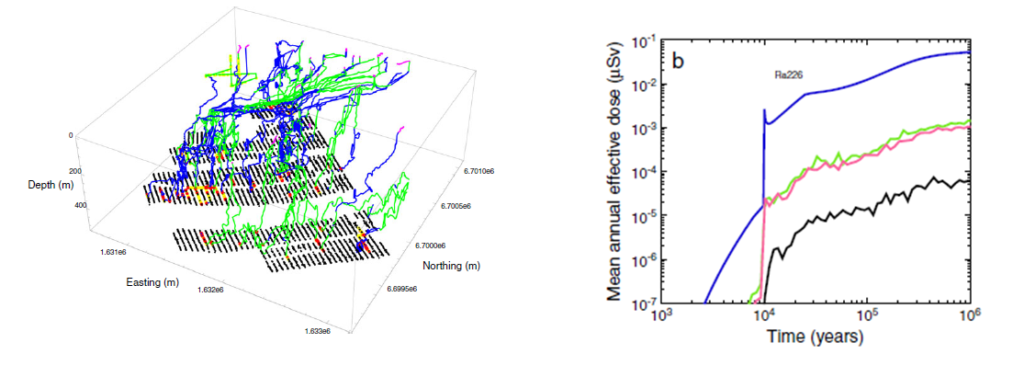
MARFA Software
MARFA development was funded by the Swedish Nuclear Fuel and Waste Management Company (SKB) and Posiva (Finland).
MARFA is open source with a BSD-3 license and available on bitbucket at this repository.
Contact Amphos 21 (marfa@amphos21.com) if you have any requests.
THIS SOFTWARE IS PROVIDED BY AMPHOS 21 “AS IS” AND ANY EXPRESS OR IMPLIED WARRANTIES, INCLUDING, BUT NOT LIMITED TO, THE IMPLIED WARRANTIES OF MERCHANTABILITY AND FITNESS FOR A PARTICULAR PURPOSE ARE DISCLAIMED. IN NO EVENT SHALL AMPHOS 21 OR CONTRIBUTORS BE LIABLE FOR ANY DIRECT, INDIRECT, INCIDENTAL, SPECIAL, EXEMPLARY, OR CONSEQUENTIAL DAMAGES (INCLUDING, BUT NOT LIMITED TO, PROCUREMENT OF SUBSTITUTE GOODS OR SERVICES; LOSS OF USE, DATA, OR PROFITS; OR BUSINESS INTERRUPTION) HOWEVER CAUSED AND ON ANY THEORY OF LIABILITY, WHETHER IN CONTRACT, STRICT LIABILITY, OR TORT (INCLUDING NEGLIGENCE OR OTHERWISE) ARISING IN ANY WAY OUT OF THE USE OF THIS SOFTWARE, EVEN IF ADVISED OF THE POSSIBILITY OF SUCH DAMAGE.
MARFA References
Painter, S., Cvetkovic, V., 2005. Upscaling discrete fracture network simulations: An alternative to continuum transport models. Water Resources Research 41. https://doi.org/10.1029/2004WR003682
Painter, S., Cvetkovic, V., Mancillas, J., Pensado, O., 2008. Time domain particle tracking methods for simulating transport with retention and first-order transformation. Water Resources Research 44(1). https://doi.org/10.1029/2007WR005944
Painter, S., Mancillas, J., 2013. MARFA user’s manual: Migration analysis of radionuclides in the far field (No. POSIVA Working Report 2013-01). Posiva Oy, Helsinki, Finland.
Schwartz, M.O., 2012. Modelling radionuclide transport in large fractured-media systems: the example of Forsmark, Sweden. Hydrogeology Journal 20, 673–687.
Selroos, J.-O., Painter, S.L., 2012. Effect of transport-pathway simplifications on projected releases of radionuclides from a nuclear waste repository (Sweden). Hydrogeology Journal 20, 1467–1481.
Trinchero, P., Painter, S.L., Poteri, A., Sanglas, J., Cvetkovic, V., Selroos, J.-O., 2020. A particle-based conditional sampling scheme for the simulation of transport in fractured rock with diffusion into stagnant water and rock matrix. Water Resources Research.
Williams, T., Sanglas, J., Trinchero, P., Gai, G., Painter, S.L., Selroos, J.-O., 2021. Recovering the Effects of Subgrid Heterogeneity in Simulations of Radionuclide Transport Through Fractured Media. Frontiers in Earth Science 8, 588. https://doi.org/10.3389/feart.2020.586247
Selroos, J. O., Cheng, H., Painter, S., & Vidstrand, P. (2013). Radionuclide transport during glacial cycles: Comparison of two approaches for representing flow transients. Physics and Chemistry of the Earth, Parts A/B/C, 64, 32-45.


